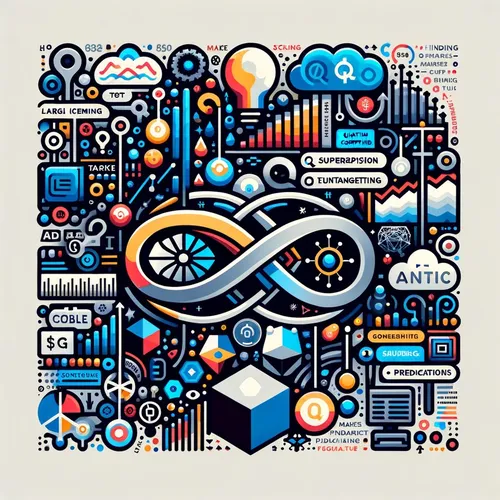Quantum Leaps: Semiconductor Yields Skyrocket with Quantum Algorithms | Quantum Market Watch
- Author
- Inception Point Ai
- Published
- Mon 07 Jul 2025
- Episode Link
- https://www.spreaker.com/episode/quantum-leaps-semiconductor-yields-skyrocket-with-quantum-algorithms-quantum-market-watch--66884426
This is your Quantum Market Watch podcast.
Imagine you’re standing in the chill of IBM’s Poughkeepsie Quantum Data Center, where the hum of cryostats and the dazzling shimmer of gold-plated quantum chips aren’t just science fiction—they’re the crucible shaping tomorrow. I’m Leo, your Learning Enhanced Operator, and right now, quantum’s transforming more than theory. It’s transforming industry.
Yesterday, IBM unveiled the next stage of its quantum roadmap: the Quantum Blue Jay system, aiming for 2,000 logical qubits and a billion error-corrected operations. But today’s real headline? The semiconductor industry just announced a new quantum computing use case that could reshape manufacturing at its core. SEALSQ, ColibriTD, and Xdigit revealed their plan to deploy quantum algorithms to optimize semiconductor wafer yields for sub-7nm nodes—a scale so fine an errant speck of dust is a boulder. They’re tackling IR Drop, that tiny voltage drop across a chip’s circuitry that can cripple performance, with quantum-enhanced simulations of partial differential equations previously out of reach for classical machines.
Think about that: Foundries have wrestled with wafer yield losses for years, sometimes sacrificing millions just to inch up a single percentage point. Now, with quantum processors chewing through the mathematical labyrinths behind IR Drop, they can run advanced models that treat every variable—electrical, thermal, even quantum tunneling behavior itself—as if they were all Schrödinger’s cats in a million simultaneous boxes.
The implications ripple far across the sector. Higher yields mean cheaper chips, which means everything from AI servers to your next smartphone can be built faster, greener, and at a lower cost. Imagine quantum-optimized manufacturing lines, where each fabrication step is dynamically adjusted, not by guesswork or slow classical iteration, but by quantum computation’s uncanny knack for solving optimization puzzles that would take centuries otherwise.
As a quantum specialist, I’m drawn to the drama buried in those subatomic mysteries—how logical qubits, these astonishing “superqubits” stabilized by quantum low-density parity check codes, will finally wrangle error rates down, making quantum computers robust enough for daily enterprise use. IBM’s roadmap isn’t just a plan; it’s a signal flare. Qiskit’s growing open-source ecosystem and partnerships with universities ensure these breakthroughs don’t just live in the lab. They’re tools for every company—including those semiconductor giants now at the quantum vanguard.
When I see this week’s union—quantum algorithms modeling chip physics while error correction achieves practical reliability—I’m reminded of the double-slit experiment’s lesson: Only by observing can we unlock potential. Today, the semiconductor sector has observed, and the quantum future just became real.
Thanks for tuning in to Quantum Market Watch. If you have questions or want a topic discussed on air, send me an email at [email protected]. Don’t forget to subscribe, and remember, this has been a Quiet Please Production. For more information, visit quietplease.ai. Until next time, keep one eye on the market, and the other firmly on the quantum frontier.
For more http://www.quietplease.ai
Get the best deals https://amzn.to/3ODvOta
This content was created in partnership and with the help of Artificial Intelligence AI
